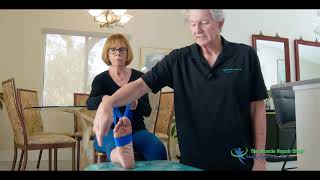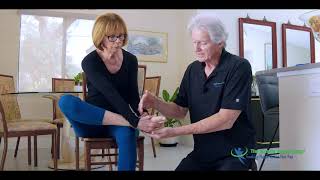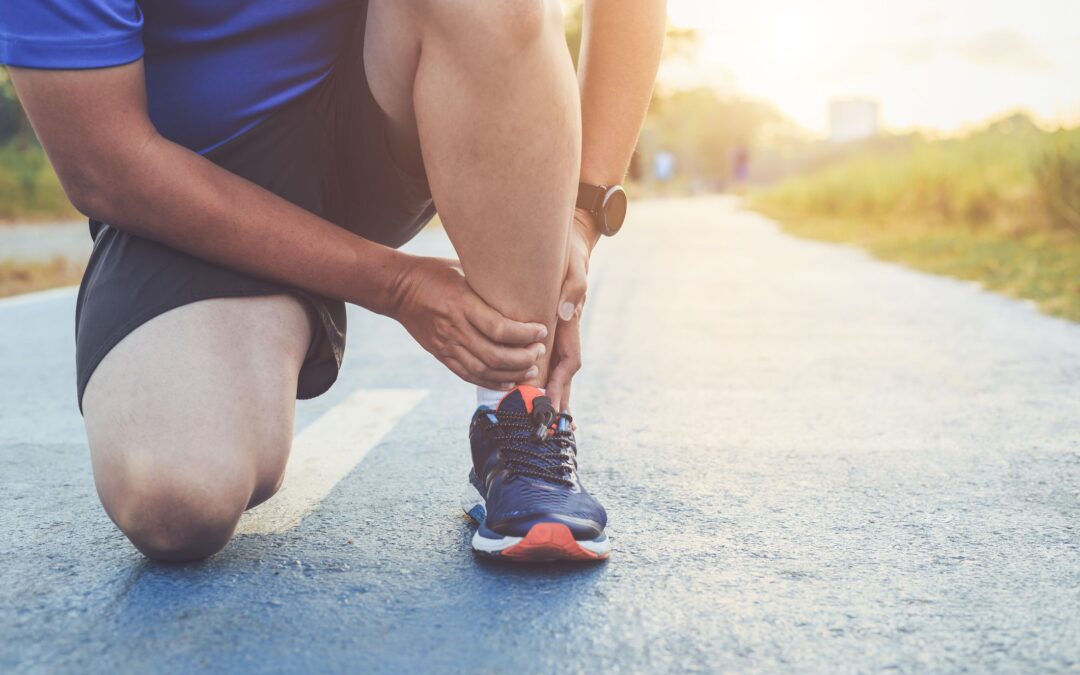Running is the current rage but is running bad for your knees?
According to Statista.com on running and jogging, almost 60 million people participated in running, jogging, or trial running in 2017. That number has certainly increased during 2020. Everywhere you look people are running or jogging. Most people do it to get into shape while others are preparing for races such as marathons, 10ks, or 5ks.
Many runners say they find peace while running while others speak of feeling the endorphins rising as they run. Whatever the reason for running or jogging, the same old injuries keep cropping up no matter the reason for doing it in the first place. Some even wonder whether running is bad for your knees.
Avoid Too Much Too Soon
The biggest mistake most new runners make is doing too much, too soon. Yes, we all want to get into shape by tomorrow, even if we haven’t worked out in 10 or 20 years, but that can only lead to an injury.
The idea that I need to push myself to the max is a bad idea. Begin with where you are right now physically but be honest with yourself. If you are overweight, it is OK, just own it and decide to make a difference. Realize, that you didn’t get there overnight, and you will not get back to the best body overnight either.
Form as the Source of Pain
I watched a man, in his 30s, running up and down this steep hill, then around the hill, and back down it. You would have thought he was training for the next Olympics. It was painful to watch him running up and down this hill because I could see damage to his back from his thighs. It wasn’t the hill that bothered me, it was the style of his running.
Most doctors will tell you that running is bad for your knees. Based on what they see daily, I would agree. The deeper question is why is running bad for your knees, and back for that matter.
There are several causes for knee pain that include the way you run, the shoes you wear, and how extreme you are in your running.
Running up on the balls of your feet may sound like a great idea to strengthen your calves, but it will lead to knee pain, Achilles tendonitis, or Plantar Fasciitis.
The tighter your four calf muscles, the harder it will become to get your heels flat to the ground without pain in the heel. Some will use heel lifts, thicker shoes, or orthotics to stop the pain. Plus, the tighter the calves, the more shin splints which can lead to knee pain on the front side just below the knee.
Running heel-to-toe can lead to back or neck pain. The pounding of your heels into the ground places tremendous stress on the hips and back. Most people think heel-to-toe walking is normal, however, heel-to-toe walking/running is due to the heels and heel support in shoes. When walking or running, it is best to land on the entire foot placing most of the pressure just behind the knuckles of the toes.
It’s the Shoes, Man!
Running shoes are all the rage too with some costing $200 or more. They look cool and come with a lot of promises for protection, but at what cost to the human body. It’s not that running is bad for your knees, sometimes it’s the shoes.
We just talked about how the heel supports force you to run on your heels, but what about arch supports along with other supports found in these fancy shoes?
Arch supports can actually weaken the arch muscle and cause the inside calf muscle to shorten. This will force you to land more to the outside of your foot which creates an injury to the outer bones of the foot or create bunions. Bunions are the result of shoes with smaller toe boxes and rotating your foot outward when walking.

Shin splints are another area that affects most runners. Placing too much weight on the ball of your feet while running will overwork the shins and increase the pressure on the head of the fibula. The head of the fibula is just to the outside of the knee and it feels like a boney knot. The harder the shins become, the more pressure is placed on this joint which can cause knee pain or pain down the shins.
Sit in a chair, cross your leg with one ankle resting on top of the opposite knee and use your hands to press slowly up and down the shin. Hold onto to the pressure for a few seconds and feel the shins release. Do not force it as the brain must learn to relax and release these muscles.

https://youtu.be/Qp27i32bSpQ
Finally, shoes are important. The stiffer the shoe, the more risk of injury. The best running shoe is one that can folded in half easily., but do not go cold turkey and switch shoes tomorrow. Work on your feet for a few weeks and soften your feet then move on to thinner shoes.
I made the quick switch years ago and it took me 2 weeks to calm my muscles down. Once you make the switch you will improve your balance and energy level as it takes less muscle energy per stride. I love wearing Merrell Vapor Gloves 4, but all shoe manufacturers make minimalist shoes. Since I switched shoes and improved the softness in my feet, it is hard to wear normal shoes again. The best part is your feet will love you for it.
SUBSCRIBE to view all the videos that demonstrate Stretch n’ Release exercises to prevent running injuries and reduce pain.
Want to Talk with Me Directly? Start Here
We’re happy to offer you a complimentary 30-min virtual consultation so you can experience this for yourself. Schedule your introduction to Stretch n Release now.
About The Muscle Repair Shop
Drawing upon his personal experience as a former competitive athlete turned wheelchair, obese and chronic pain sufferer, Muscle Repair Shop Founder Butch Phelps decided to take his health into his own hands when at the age of 36 he was told he might not make it to his 40th birthday. Applying balanced nutrition advice from his doctor along with a sound exercise program, he went from 315 lbs. to 180 lbs. Motivated by his experience, he then acquired degrees in advanced therapeutic massage and aging sciences to help people eliminate chronic pain. This included applying his expertise in how people age, including the effects of dementia, anatomy, psychology, and the day-to-day struggles living as an older person to his practice and development of The Muscle Repair Shop’s one-of-a-kind Stretch n’ Release Technique.
Available through in-office and virtual coaching treatment sessions, this unique combination of stretching and breath work teaches the brain to release the emotional side of muscle tension and pain allows clients to find lasting relief and healing from stiffness, aches, injuries, and chronic pain. The at-home exercises come with customized instructional videos and virtual or in-office support, allowing clients to enjoy and experience life and sports as they did before limitations slowed or curtailed activities.


